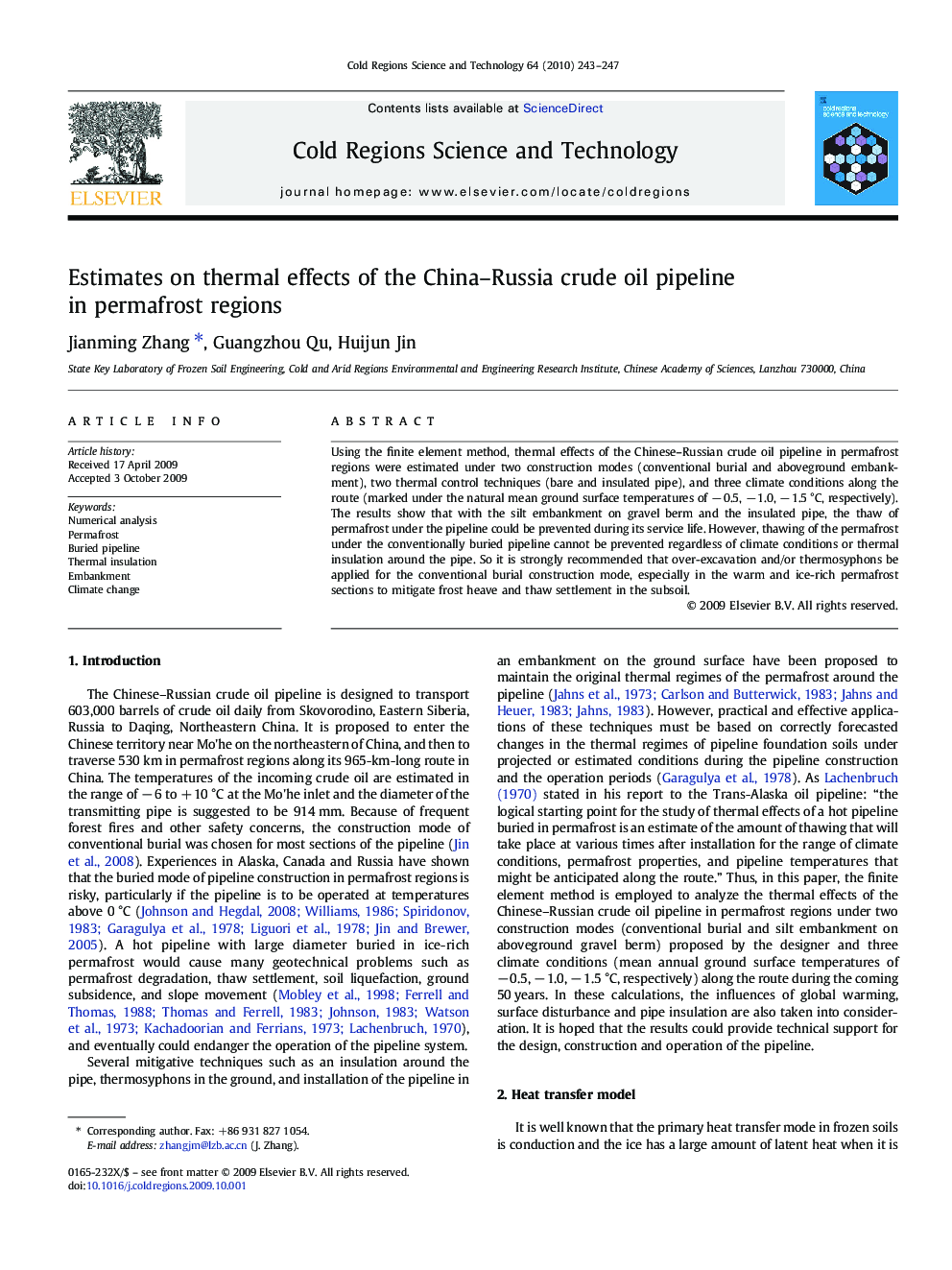| Article ID | Journal | Published Year | Pages | File Type |
|---|---|---|---|---|
| 4676311 | Cold Regions Science and Technology | 2010 | 5 Pages |
Using the finite element method, thermal effects of the Chinese–Russian crude oil pipeline in permafrost regions were estimated under two construction modes (conventional burial and aboveground embankment), two thermal control techniques (bare and insulated pipe), and three climate conditions along the route (marked under the natural mean ground surface temperatures of − 0.5, − 1.0, − 1.5 °C, respectively). The results show that with the silt embankment on gravel berm and the insulated pipe, the thaw of permafrost under the pipeline could be prevented during its service life. However, thawing of the permafrost under the conventionally buried pipeline cannot be prevented regardless of climate conditions or thermal insulation around the pipe. So it is strongly recommended that over-excavation and/or thermosyphons be applied for the conventional burial construction mode, especially in the warm and ice-rich permafrost sections to mitigate frost heave and thaw settlement in the subsoil.
